Introduction
I created a thundercloud light fixture. It contains many LEDs that flash randomly like lightning. It is made to hang from a ceiling. I was inspired to create a light fixture that mimicked something in nature.
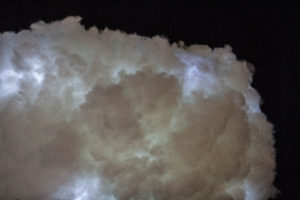
https://www.youtube.com/watch?v=IYwVQtSiejo
Materials
- Polyfiber pillow stuffing
- LEDs
- 100′ 22 AWG White Wire
- Arduino UNO
- Mux Shield II
- Small breadboard
- White Poster Board
- Spray Adhesive
- 9V Battery
The cloud itself is made of polyfiber pillow stuffing. LEDs were wired throughout the pillow stuffing to resemble bolts of lightning. The LEDs are attached to an Arduino UNO with a Mux Sheild II add on. The Mux Sheild II allows for 48 output pins. This allowed for a greater number of LEDs/lightning bolts in the cloud. The entire cloud is built around a cardboard poster board. The board hold all the hardware needed to run the lights, the arduino and breadboard. The arduino is run off a 9V battery. The polyfiber is attached to the board using spray adhesive. Clear hanging wire is also attached to the board and runs out the top of the cloud, so you can hang it from the ceiling. The wire is arranged so that it should be hung from a hook.
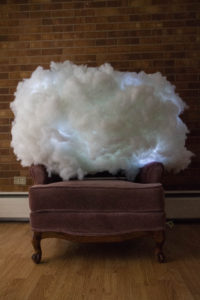
Building
I built the cloud in layers. The first layer was the poster board. I attached a thin layer of pillow stuffing with spray adhesive. Then I added a layer of lightning bolts. The wires of the lightning bolts were threaded through a hole in the middle to the other side of the poster board where the hardware would be held. I did another layer of pillow stuffing, then another layer of lightning bolts and then another layer of pillow stuffing. I also put some pillow stuffing on the back to cover all of the poster board. All this is held together by spray adhesive and some string. All the wire is threaded through the hole and attached to the hardware on the other side.
This picture is of the front of the cloud during assembly, after the first layer was put on. You can see the lightning bolts resting on the first layer of the cloud.
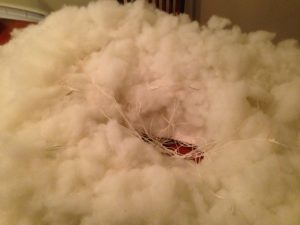
This picture is of the back of the cloud after all the assembly was complete. The left side is the bread board. The right side is the arduino and battery.
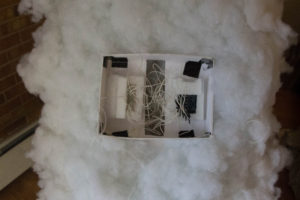
Code
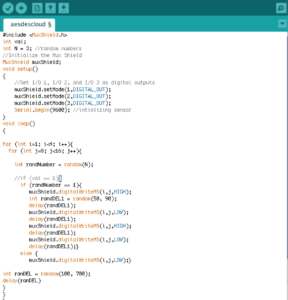
Cost
- Polyfiber – $18
- 100 Pack LEDs – $30
- 100′ 22 AWG Wire – $10
- Spray Adhesive – $14
- Poster Board – $14
- Hanging Wire – $7
- Total – $93

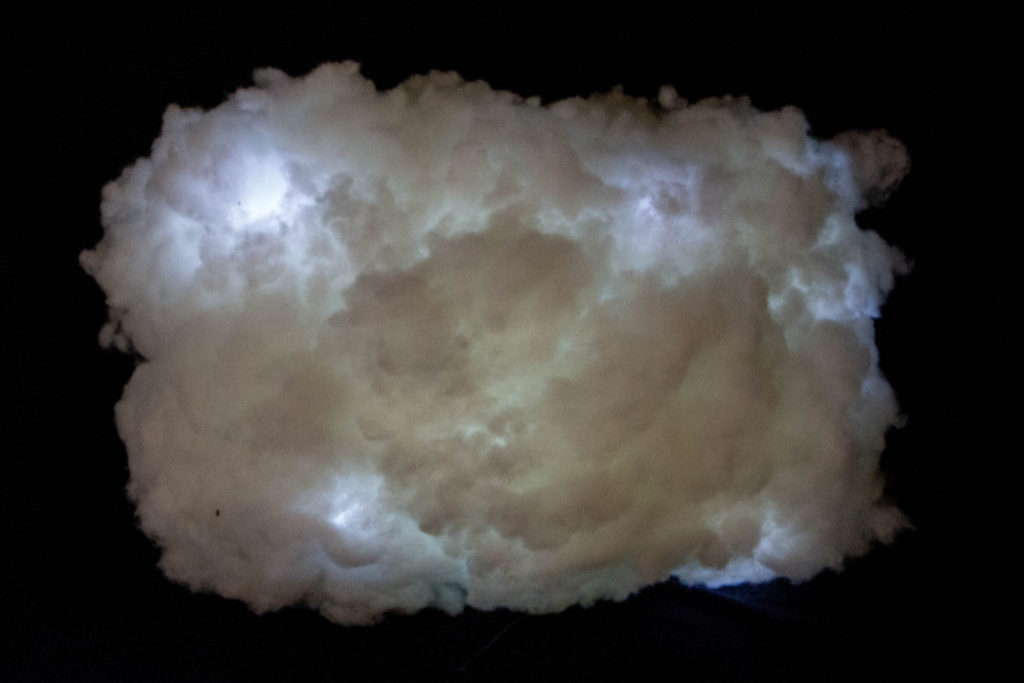
3 Comments. Leave new
Fabulous job with the construction, seeing it in person showed how natural the color looked. I think you did a good job here reflecting how big the thing is with the chair image, that it’s bigger than some ordinary pillow you might find. Excellent job cataloging expenses and your timeline, gives a really good idea for how long it would take were I want to do this, in addition to the steps I would need to take to do so.
This is a really amazing project, it really ended up being an amazing piece. It looks almost exactly like a thundercloud! I’m really impressed with your creative sourcing of materials; I would have probably tried to make a thundercloud looking shape out of some rigid material, although the way you did it using polyfiber looks so much more realistic. Does the piece stay rigid? If the polyfibers started falling/moving, you could potentially try some kind of coating (something as simple as spray glue) to hold it in place. I think it turned out fantastic.
When you first presented, I was really curious to see what your project would end up looking like. However, I really like how this ended up. In images it actually looks like a thundercloud! How hard was it to get that picture of the light flashing, since it is so quick? I think the best improvement that could be made would be to guarantee that it would be fireproof! It’s probably very doubtful that there will be a fire, but it is always a concern! You did mention you like living life on the wild-side (in terms of fire), so maybe the fireproof concept isn’t even necessary. Anyways, it looks great!